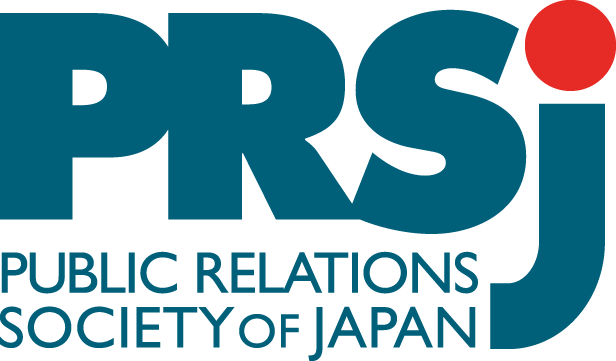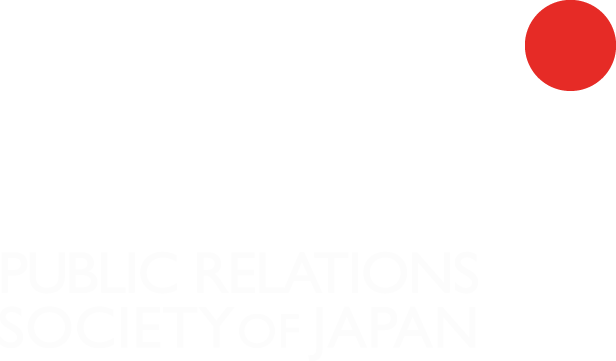Public Relations Society of Japan conducts eighth PR Industry Survey
* Using the per-employee sales average based on each respondent’s mean workforce size for the year
PR Industry Fact-Finding Survey Summary
(Conducted by Hummingbird Inc. by mail from March 2–19, 2021)
Profile of PR Firms Surveyed
- The average number of employees is 84.7.
- Due to the existence of many small firms, however, the median workforce size is 15.0.
- The ratio of female to male employees is 53:47, with women continuing to outnumber men.
- The ratio of female directors is 32.5%.
- The average percentage of female managers is 41.0%, but 65.3% in firms with 19 or less employees.
- Hiring plans in spring 2021 average 3.9 employees, although 39% have no plan to hire anyone.
Business Outlook – Sales (figures in parentheses from previous survey)
49% (59%) of respondents said sales will “increase” while 20% (9%) said “decrease.” This is the first time since the survey began that the “increase” percentage has fallen below 50%.
Business Confidence (figures in parentheses from previous survey)
12% (34%) of respondents said their current business confidence is “good” whereas 51% (18%) answered “bad,” suggesting that the prolonged COVID-19 pandemic has had a negative impact. Regarding business confidence going forward, 36% (34%) said “will improve” and 16% (14%) said “will worsen.” Expectations for a turnaround in the business environment were similar to the results of the previous survey conducted prior to COVID-19.
Types of Work Handled – Top 10 Categories (multiple responses)
| 1. Publicity planning and implementation | 88% |
| 2. Media relations | 80% |
| 3. Information gathering and analysis | 78% |
| 4. Planning and implementation of in-person press conferences and PR events | 78% |
| 5. Retainer-based PR consulting | 77% |
| 6. Media monitoring and clipping | 75% |
| 7. Planning and management of owned and social media | 73% |
| 8. Planning and implementation of online press conferences and PR events | 71% |
| 9. Editorial tie-up advertising | 67% |
| 10. PR effectiveness measurement | 65% |
- Publicity planning/implementation and media relations occupy the top two positions. There is no significant change in the overall trend among top items.
- “Planning and management of online press conferences and PR events” (71%), was newly added and made the top 10, indicating that PR work has increasingly shifted online due to COVID-19.
Top 5 Fastest Growing Work Categories (multiple responses, parentheses indicate previous survey)
| 1. Employee education and training services | 48% (35%) |
| 2. Community relations (consensus building with local residents, etc.) | 38% (27%) |
| 3. Government relations | 29% (18%) |
| 4. Planning and management of owned and social media | 73% (62%) |
| 5. Video production and promotion | 61% (54%) |
- The fastest growing work categories since the last survey are those other than media relations, confirming the increasing emphasis on internal communication.
- Relationship-building with stakeholders such as local communities and government agencies also is growing fast.
- The use of owned and social media is becoming more widespread and increasingly important.
Top 10 Areas in Which Operational Needs Are Expected to Increase (multiple responses)
| 1. Planning and implementation of online press conferences and PR events | 67% |
| 2. Production and promotion of videos | 65% |
| 3. Planning and management of owned and social media | 61% |
| 4. Planning and implementation of online seminars and symposiums | 58% |
| 5. Communication related to SDGs and ESG investments | 55% |
| 6. Communication leveraging influencers | 54% |
| 7. Crisis-management media training | 46% |
| 8. Crisis management public relations (excluding media training) | 41% |
| 9. Marketing consulting | 38% |
| 10. Risk and crisis consulting | 38% |
- The top four items in this grouping are all online-based, indicating a clear shift toward online PR work.
- 55% of the respondents selected “ Communication related to SDGs and ESG investments,” indicating an increasing focus on this field.
- The importance of public relations for crisis management is gaining recognition, as evidenced by the fact that three related items made the top-10 list.
Key Issues Regarding Public Relations Services
(multiple responses, figures in parentheses from previous survey)
| 1. Securing and developing human resources | 70% (80%) |
| 2. Developing new public relations methods | 65% (55%) |
| 3. Leveraging online public relations methods | 58% (new item) |
| 4. Diversification of service offerings | 51% (38%) |
| 5. Securing quality partners and subcontractors | 45% (44%) |
| 6. Forming business alliances with other PR firms and subcontractors | 45% (32%) |
- The top two issues, “securing and developing human resources” and “developing new public relations methods,” are the same as in the previous survey.
- “Leveraging online public relations methods,” which was added to the survey this year, came in third place, confirming the shift toward online work.
Key Business Issues
(multiple responses, figures in parentheses from previous survey)
| 1. Expanding sales | 7% (65%) |
| 2. Increasing employee motivation | 57% (52%) |
| 3. Reforming workstyles | 45% (42%) |
| 4. Allying with other companies | 38% (32%) |
| 5. Securing mid-career hires offering immediate skills | 33% (44%) |
- “Expanding sales” increased 12 points from the previous survey, reflecting the urgent need for business recovery.
- “Increasing employee motivation” rose by 5 points. Together “reforming workstyles,” this has become a key issue related to teleworking.
- “Securing mid-career hires offering immediate skills” decreased by 11 points, indicating COVID-19’s impact on recruitment plans.
Top 3 Workplace Reforms Implemented So Far
(figures in parentheses include those planning implementation)
| 1. Introduction of teleworking | 91% (91%) |
| 2. Introduction of fully flexible work schedules | 61% (68%) |
| 3. Introduction of commuting-rate targets | 57% (64%) |
- “Teleworking” is the top reform implemented so far, cited by 91% of respondents.
- 61% of respondents have already introduced “fully flexible work schedules,” and the figure rises to 68% including those planning to do so in the foreseeable future.
COVID-19’s Impact on Fiscal 2020 Sales
| 1. Caused sales to decrease greatly | 44% |
| 2. Caused sales to decrease slightly | 35% |
| 3. Caused sales to remain flat | 10% |
| 4. Caused sales to increase | 6% |
Business Sectors Impacted by COVID-19
(n=50 companies, multiple responses)
| 1. Events | 22 |
| 2. Media relations and advertising | 16 |
| 3. Tourism | 8 |
| 4. Overseas | 5 |
- The most affected sector was “events,” followed by “media relations and advertising.”
- Restrictions on outbound and inbound travel had a significant impact on public relations-related “tourism” and “overseas” business.



